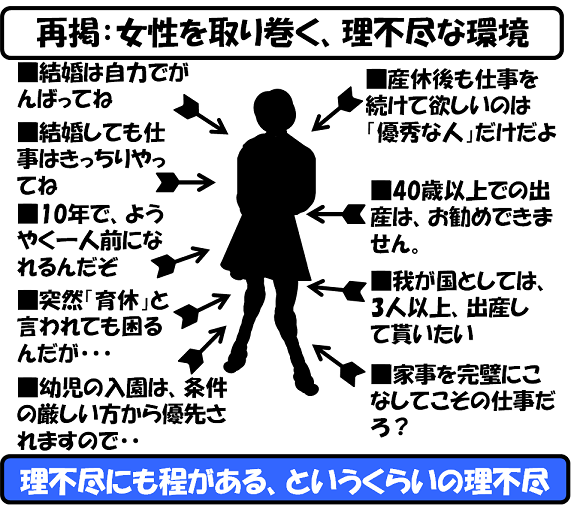「労災認定された死亡者の男女比が、五分五分になる日が来れば、それは『女性が男性と同程度の社会的地位に到達した証』と言えるのか?」
私は以前、鉄道の人身事故をきっかけに、自死(自殺)に関する統計的な計算を行ったことがあります。
I previously conducted statistical analyses on suicide cases triggered by railway-related fatal incidents.
今回は観点を変えて、「50歳を過ぎて、過労やメンタルヘルスが原因で死亡し、労災認定を受けた人の割合は、それ以下の世代と比べてどの程度か」を、フェルミ推定で試みてみました――まあ、個人的な興味です。
This time, I shifted the perspective and used Fermi estimation to consider how often people over 50 die from overwork or mental health issues and are officially recognized as work-related deaths, compared to younger generations, just out of personal interest.
-----
脳・心疾患による過労死は中高年(40代後半~60代)に多く、精神障害による自死は若年~中年層(20〜40代)に多いという傾向が見られる基礎資料と労働人口の年齢構成を前提に推定したところ、「労災認定された死亡者のうち、約61.5%が50歳以上」であるという試算になりました。
Based on fundamental data suggesting that deaths from overwork-related brain and heart disease are more common among middle-aged individuals (late 40s to 60s), while suicides from mental disorders are more frequent among those in their 20s to 40s, I estimated that about 61.5% of work-related deaths occur in people over 50.
ここに「労災認定死亡者のうち男性が90%以上」というデータを加味すると、50歳以上の男性の労働人口における労災死亡リスクは、他の世代に比べて約2.2倍になる、という推計が得られます。
If we add the data that over 90% of work-related deaths involve men, then the risk of death for working men over 50 appears to be about 2.2 times higher than for other generations.
※なお、厚生労働省からは年齢別の労災死亡認定件数は明示されていないため、これはあくまで仮定とフェルミ推定に基づく結果であることをご了承ください。
Please note that the Ministry of Health, Labour and Welfare does not publicly release age-specific data for these deaths, so this result is a rough estimate based on assumptions and Fermi calculations.
-----
一方、現在の日本における女性管理職の割合は約12.9%。
Meanwhile, the percentage of women in managerial positions in Japan currently stands at approximately 12.9%.
世界経済フォーラム(WEF)の2024年版ジェンダーギャップ指数では、日本は146カ国中118位。
According to the World Economic Forum’s 2024 Global Gender Gap Report, Japan ranks 118th out of 146 countries.
女性の社会的地位(どう定義するかによって揺らぎはありますが)は、国際的に見ても依然として低位にとどまっています。
Even considering variations in how we define “social status,” women’s standing in Japan remains low by international standards.
-----
以前、私は「私たち日本人は、タリバン政権下の国々と同程度に“女性を抑圧”し、その一方で“出生率では完全敗北”している」と記したことがあります。
I once wrote that “we Japanese oppress women to a degree similar to Taliban-ruled countries, and yet are utterly losing in terms of birthrates.”
少々挑発的ではありますが、この表現は、今もなお的を射ていると思っています。
While admittedly provocative, I still believe the expression hits the mark.
-----
そして、あるとき、ふと、こんな皮肉な考えが頭をよぎってしまいました。
And then one day, a somewhat cynical thought crossed my mind.
「労災認定された死亡者の男女比が、五分五分になる日が来れば、それは『女性が男性と同程度の社会的地位に到達した証』と言えるのか?」
When the gender ratio of officially recognized work-related deaths becomes 50:50, will that mean women have finally reached social parity with men?
-----
もちろん、これは人道的にも倫理的にも、発言としては問題があります。
Of course, this is a problematic statement from both a humanitarian and ethical standpoint.
ですが、「経済的対等」が時に「負荷やリスクの対等」でもあるという現実を考えれば、まったく無関係とも言い切れません。
However, if we accept that economic equality often entails an equal share of burdens and risks, the idea is not entirely off-base.
-----
結局のところ、現実はこの画像のとおりです。
In the end, reality looks a lot like the image shown here.
これは、10年以上も前に私が作成した図ですが、今も本質的には変わっていないと思っています。
I created this illustration over ten years ago, yet I believe the core issues it highlights remain unchanged.
理不尽の“平等”を目指す前に、そもそも理不尽を是正すべき――そんな当たり前の問いに、私たちは答えを出せていないように思えます。
Before striving for “equality in unfairness,” perhaps we should ask the obvious: why not eliminate the unfairness itself? Yet society still seems to have no answer.
